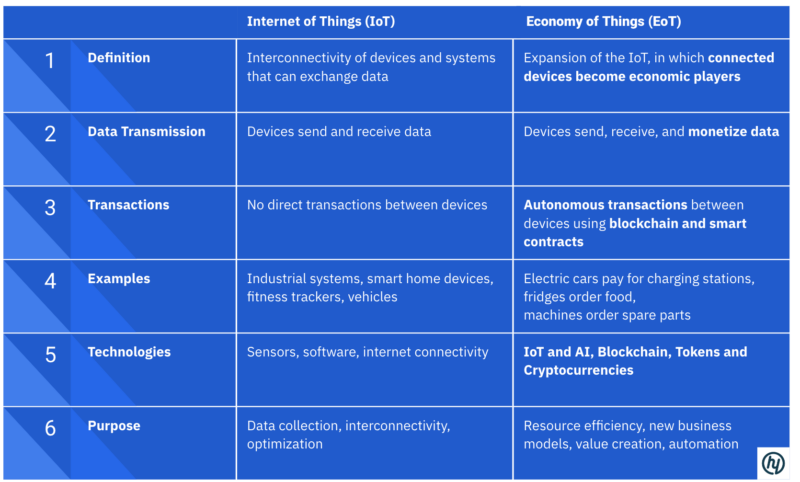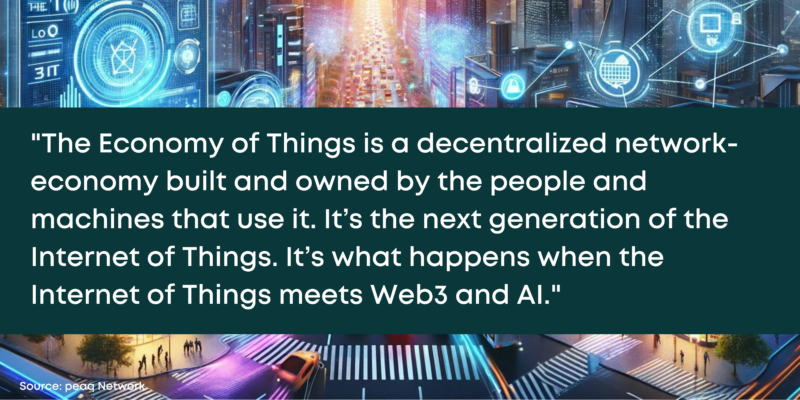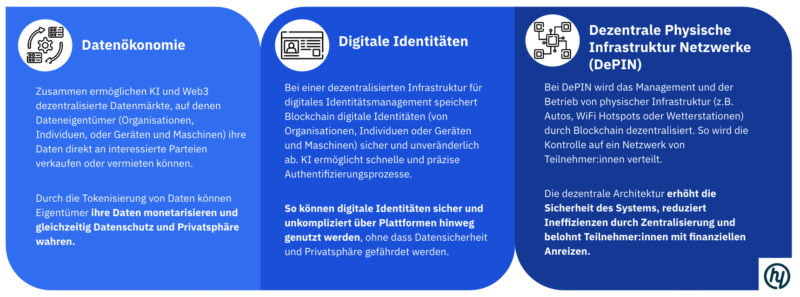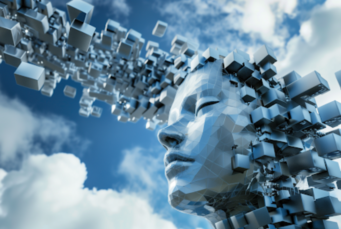The Next Evolution of Web3 x AI: The ‘Economy of Things

What does an economy look like where supply chains self-optimize in real time, factories autonomously negotiate energy prices, and retail stores automatically adjust their inventories to suppliers? What sounds like science fiction is actually a glimpse into a near future where artificial intelligence (AI) and Web3 technology work closely together. In this future, the “Internet of Things” (IoT) transforms into an “Economy of Things” (EoT), fundamentally changing the way businesses operate, collaborate, and create new value across industries.
The Leap from IoT to EoT
The Internet of Things forms the foundation for the Economy of Things by enabling connectivity and data exchange between devices. It constitutes a vast network of interconnected devices (e.g., manufacturing machines, electric vehicle charging stations, cars, or household appliances) that all collect and exchange data. This facilitates process optimization and task automation. Decision-making can also be significantly improved by an IoT ecosystem: by providing real-time data from various sources, IoT devices enable more precise and faster responses to production changes and market demands.
For businesses, this means improved efficiency in supply chain and production, as well as lower operational costs through data-driven insights into business processes. For example, a manufacturer in the industrial sector can monitor their machines in real time to predict failures before they occur. Retailers can also personalize the shopping experience by analyzing customer behavior using connected sensors.
The Economy of Things builds upon the Internet of Things and extends the concept by turning connected devices into economic actors. These devices can directly participate in transactions and monetize the value they create. Blockchain-based technologies such as smart contracts and decentralized identity solutions are used to facilitate this process.

Implementation of the Economy of Things: Web3 x AI as Technical Enablers

The combination of AI and Web3 technology forms the foundation of the Economy of Things, enabling businesses to leverage the advantages of decentralized networks and intelligent decision-making. AI utilizes learning algorithms and predictive analytics to manage and analyze the vast data streams from connected IoT devices. Web3 complements these capabilities through the use of blockchain technology, creating a decentralized and secure platform where devices can autonomously conduct transactions without intermediaries.
This synergy not only enhances operational efficiency but also opens new avenues for value creation. The new business models enabled by the interplay of AI and Web3 can be divided into three main areas: Data Economy, Digital Identities, and Decentralized Physical Infrastructure Networks (DePIN). (Spoiler: We find these topics so exciting that we’re dedicating an exclusive event to them in the fall of 2024. Feel free to reach out to me directly for more information.)

A concrete example of the Economy of Things from Bosch and Fetch.ai, both speakers at this year’s hy Web3 Summit:
In collaboration with peaq, the two companies are developing DePINs that enable IoT devices to autonomously conduct economic transactions.
peaq provides its Layer-1 blockchain as the foundation. Building on this, Fetch.ai’s AI agents allow IoT devices to autonomously conduct economic transactions. For instance, AI agents collect data through their owners’ smartphones (such as navigation, noise pollution, or light pollution data). Fetch.ai’s AI agents then compare the financial rewards (often in the form of cryptocurrencies) offered by various DePIN projects for the collected data. The data is sold to the project that offers the most attractive rewards.
The Three Pillars of the Economy of Things

- Openness: Openness in the context of blockchain means that the underlying infrastructure and protocols are publicly accessible and usable by anyone. There is no central authority that restricts access or can exclude participants. This is crucial for the Economy of Things, where many different devices need to work together seamlessly. Additionally, an open EoT ecosystem fosters innovation. It allows developers to create new applications and services that can easily integrate with existing systems.
- Interoperability: Interoperability ensures smooth communication and collaboration between different blockchain networks and IoT systems. Only through interoperability can a variety of actors, devices, and services within an Economy of Things communicate and perform transactions. Closed systems would hinder connectivity and scalability.
- Security: In a decentralized EoT environment, mechanisms must be in place to ensure the protection of sensitive data and the integrity of communication. Blockchain-based identity solutions are excellent for this purpose. They allow the identity of devices, users, and services to be uniquely and immutably verified. Each identity is secured by cryptographic keys, ensuring that only authorized actors can access certain data or functions.
Sound technical? It’s not as complex as it seems — we even find it quite fascinating! We explain exactly what decentralized identities look like here.
Outlook
Back to the here and now: Currently, AI and blockchain are primarily used separately and for entirely different purposes. Companies use AI mainly for data analysis, process automation, or customer service – keyword: chatbots (by the way, my colleagues Jan Hasse & Christoph Schwienheer are building exactly that for many of our clients). Blockchain is predominantly used to enhance security and data protection, ensure transparency and traceability in supply chains, and manage digital identities. Meanwhile, the Internet of Things is still largely dominated by individual consumer devices like smartphones and smart home gadgets, rather than driving digitalization within the industry.
However, this ‘parallel existence’ is set to change in the coming months and years. The convergence of AI and blockchain will enable decentralized, autonomous systems where machines and devices can securely and transparently exchange data, services, and payments among themselves. AI will analyze data collected by IoT sensors and make intelligent decisions, while blockchain will serve as a trustworthy, tamper-proof platform for the exchange of values, identities, and transactions between machines.
Companies that recognize this synergy early and act now will be able to benefit from entirely new, data-driven business models in the future. As often happens, the change will come faster than expected, and the Economy of Things will become the new status quo.
Mark Your Calendars!
In Fall 2024, we are hosting a bootcamp focused on proof of concepts at the intersection of Corporates/SMEs x Web3 x AI, covering the key topics of data economy, digital identities, and decentralized infrastructures (DePIN).
Participation is by invitation only – if you want to be part of it or are already curious, feel free to reach out to Henning Daut directly!
*We would like to thank Angelina Berger for her contributions to this article


